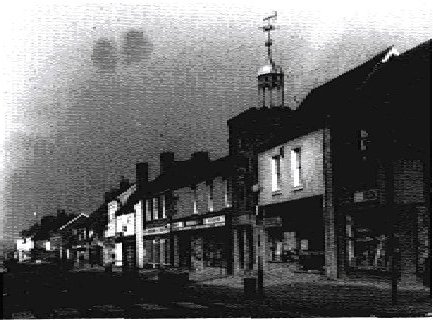
"WATTON THROUGH THE AGES"Watton is an old market town that in the Doomsday Book was described as Wadetuna, the town of the ford, from the Angto-Saxon WADAN. The area of the parish covers 1,808 acres and in addition to arable and meadow, there were large areas of woodland with Wayland Wood probably considerably larger than it is to day. The earliest historical records of Watton are associated with its market and in 1202 John de Vaux, who held Watton Hall Manor was granted a Market Charter by King John whereby a market could be held in the town every Friday, but in 1204 an enquiry was made under a writ as to whether the market here was not prejudicial to the market at Saham Toney, the adjoining parish, and it being found this was so, the charter authorising the holding of the market was recalled. Before the year was out however, the Manor had been conveyed by John de Vaux to his brother Oliver, who had a considerable influence with the King, and he thus obtained a new Charter by which the market was to be held every Wednesday, as it still is to day. At this time Saham Toney was a Royal Manor and much larger and wealthier than Watton, so it is understandable that the establishment of Watton market was resented at Saham. In 1375 friction between the two communities became so great that it developed into open violence. But for Watton the establishment of the market was crucial, both for the town's economic importance and also to the evolution of its physical shape. As the market place became the focus of the community, the town gradually developed around it and steadily spread westwards along what is now the High Street. At this time Neaton and Watton Green were entirely separate hamlets, each consisting of a small number of buildings grouped around the edge of the common grazing land.
In 1349 the Black Death accounted for many of Watton's inhabitants and of the thirty-two burials recorded in 1712, no less than twenty one of them succumbed to smallpox. There is little documentary evidence of the history of the town prior to the 16th century, but from time to time excavations have revealed considerable evidence that the town was occupied by the Romans and some archaeologists believe that Norwich Road and the High Street follow the line of a former Roman Road. |

